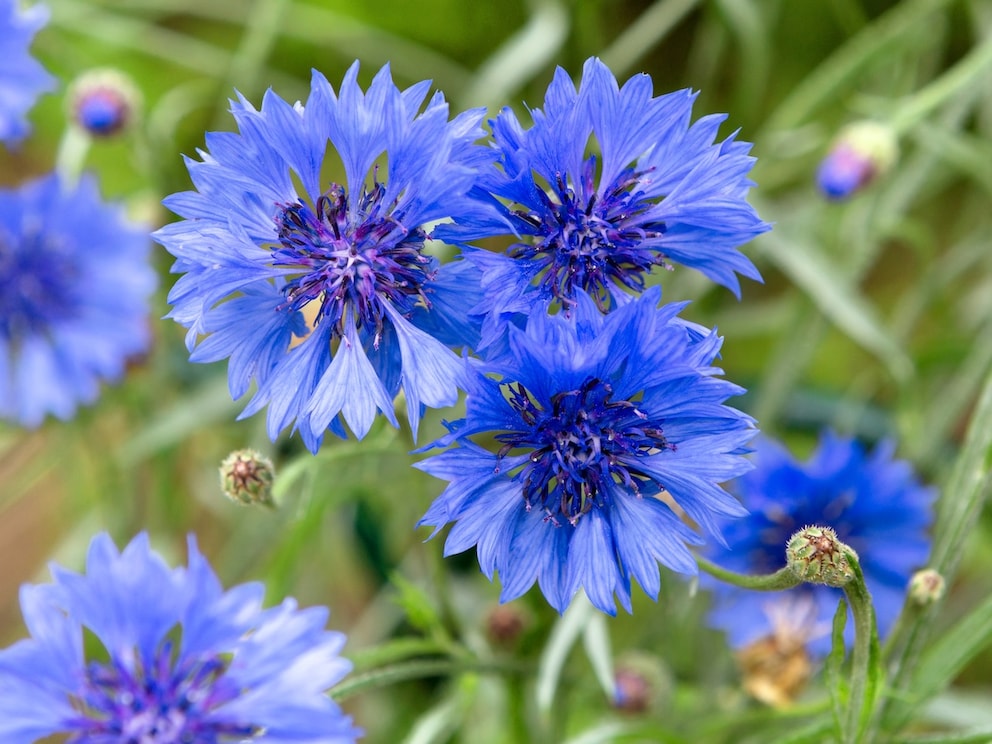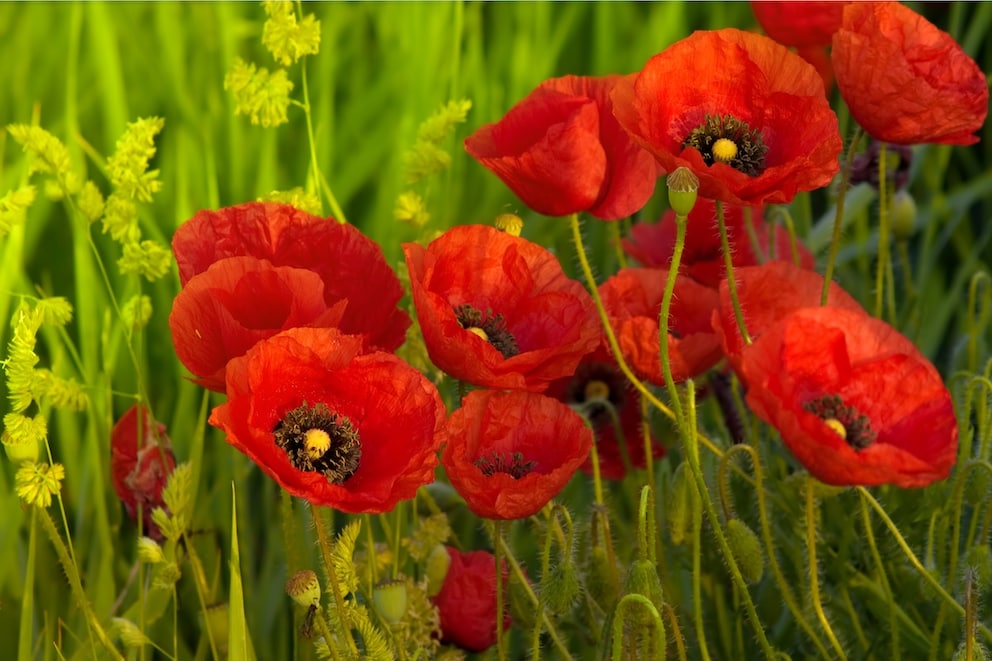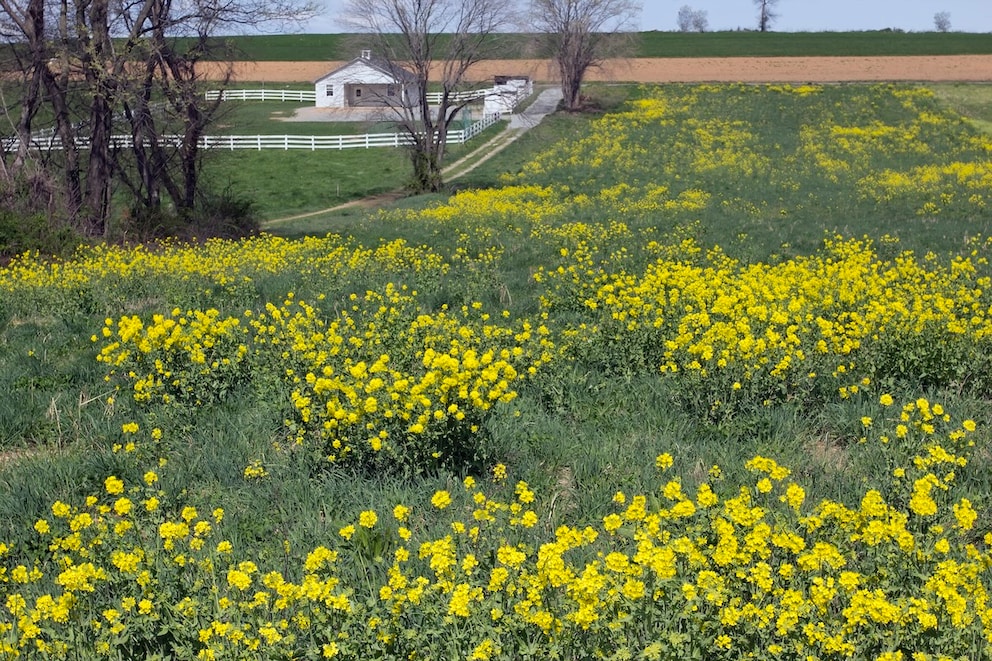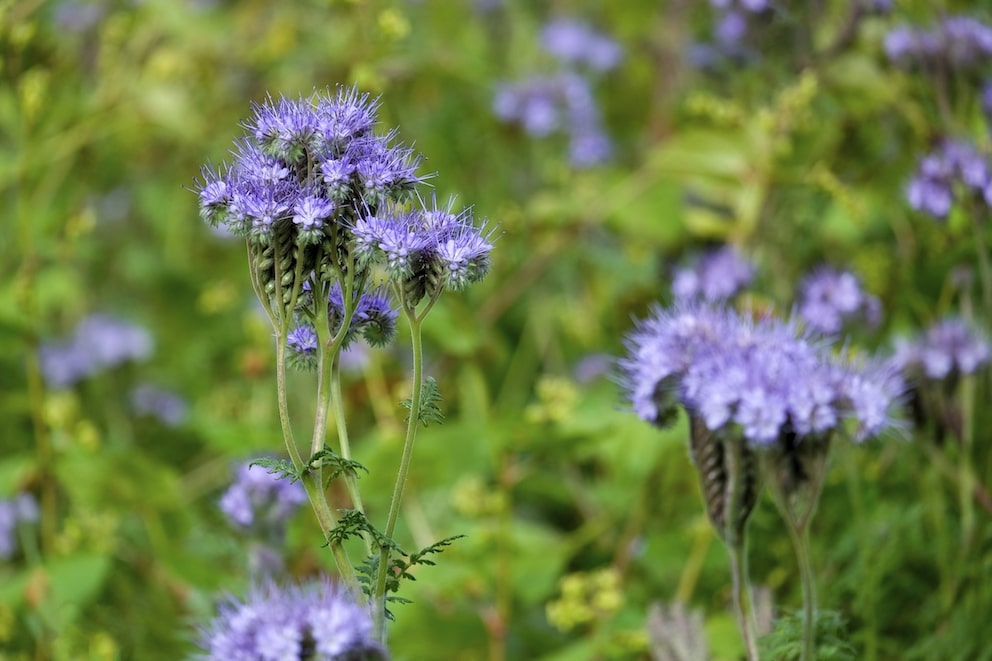July 8, 2025, 3:34 pm | Read time: 7 minutes
Which Flowers Truly Attract Bees and Hoverflies? An international research team has now found the answer—with surprising recommendations for gardeners, municipalities, and insect enthusiasts. And it’s not just the animals that benefit: There’s something for the human eye as well.
Botanists from Copenhagen and the United Kingdom have conducted a scientific study to determine which plants are particularly popular with pollinators such as bees and hoverflies. The result: Two new seed mixtures could ideally combine insect protection and garden beauty.
Overview
- What Pollinators Really Like
- Popular with Insects–and People
- Common Yarrow (Achillea millefolium)
- Corn Chamomile (Anthemis arvensis)
- Cornflower (Centaurea cyanus)
- Viper’s Bugloss (Echium plantagineum)
- Common Poppy (Papaver rhoeas)
- Corn Marigold (Glebionis segetum)
- Charlock Mustard (Sinapis arvensis)
- Scentless Mayweed (Tripleurospermum inodorum)
- Garden Cosmos (Cosmos bipinnatus)
- Moroccan Toadflax (Linaria maroccana)
- Lacy Phacelia (Phacelia tanacetifolia)
- Even Small Areas Help Biodiversity–and Everyone Can Do Something
What Pollinators Really Like
The question of which plants are truly favored by bees and hoverflies, whose numbers are declining worldwide, was the focus of a study by botanists from the Natural History Museum of Denmark at the University of Copenhagen and the National Botanic Garden of Wales. They scientifically examined which flower mixtures attract the most pollinators.
The starting point was the observation that existing knowledge about the effects of certain flower species on pollinators is primarily based on subjective experiences. A scientific approach was needed to test various flowers scientifically to ensure how to help pollinators, which are crucial for our ecosystem, said Natasha de Vere, professor and botanist at the Natural History Museum of Denmark.
Popular with Insects–and People
To counteract the global decline of pollinators, the team analyzed more than 400 existing studies and tested common seed mixtures. The goal was to find out which combinations not only attract a large number of insects but also look good.
Based on their research, they developed two new seed mixtures and tested their effects: both in terms of the frequency of insect visits and their aesthetic appeal to humans. It turned out that seed mixtures consisting of non-native and native flowering plants establish better in the soil, bloom longer, and are visited by more pollinators. Additionally, they are the most attractive to the human eye, according to Natasha de Vere.
Based on the study, the researchers recommend choosing seed mixtures with these plant species if you want to attract bees and hoverflies:
Common Yarrow (Achillea millefolium)
Common yarrow is a native wild plant with finely feathered leaves and umbel-like, mostly white flowers that bloom from June to October. It has been used for centuries in herbal medicine, primarily for its antispasmodic, anti-inflammatory, and digestive properties. Yarrow prefers to grow in meadows, along roadsides, and in sunny locations.
Corn Chamomile (Anthemis arvensis)
Corn chamomile is a delicate, white-flowering wild plant from the daisy family, commonly found in fields, fallow lands, and grain fields. It emits a typical aromatic scent and is an important food source for insects. Due to changes in agriculture, it has become rarer in many places but is increasingly found in flowering areas and natural gardens.
Cornflower (Centaurea cyanus)

The cornflower is a strikingly blue-flowering wild plant that originally appeared as a companion plant in grain fields. It is not only a symbol of rural cultural landscapes but also a valuable nectar source for bees and butterflies. Due to intensive agriculture, it has become rarer today but is increasingly promoted in flowering strips and natural gardens.
Viper’s Bugloss (Echium plantagineum)
Viper’s bugloss is a wild plant with bright violet-blue flowers and broad-lanceolate leaves reminiscent of plantain. Originally from the Mediterranean region, it has naturalized in warmer parts of Central Europe. Its rich flowers are particularly popular with wild bees and butterflies, making it a valuable insect plant.
Common Poppy (Papaver rhoeas)

The common poppy, with its bright red flowers, is one of the most striking native wildflowers that color fields and meadows in summer. It was once a frequent companion of grain fields. Today, it is a popular symbol of biodiversity and is deliberately sown in flowering areas to provide food for insects like wild bees.
Also interesting: Plants that don’t help bees in the garden
Corn Marigold (Glebionis segetum)
The corn marigold is an annual, bright yellow-flowering plant from the daisy family. It prefers to grow on nutrient-rich, open soils and was once commonly found in grain fields.
Charlock Mustard (Sinapis arvensis)

Charlock mustard is an annual wild plant from the mustard family, with bright yellow flowers that are mainly noticeable in summer on fields and fallow lands. It is considered a typical “weed” companion in agriculture but is ecologically valuable as it provides pollen and nectar to many insects. Charlock mustard is also a relative of cultivated mustard and was formerly used as green manure.
Scentless Mayweed (Tripleurospermum inodorum)
Scentless mayweed is a widespread wild plant with white ray flowers and a yellow center, giving fields, roadsides, and fallow lands their typical summer appearance. Unlike true chamomile, it does not emit a characteristic scent, which gives it its name.
Garden Cosmos (Cosmos bipinnatus)
Garden cosmos is a colorful, annual ornamental plant with delicate, feathery leaves and large, bowl-shaped flowers in shades of pink, white, and purple. Originally from Central America, it is now commonly used in gardens, flowering areas, and natural plantings.
Moroccan Toadflax (Linaria maroccana)
Moroccan toadflax is a delicate annual plant with strikingly colorful, often bicolored flowers in violet, pink, yellow, or white. Originally from North Africa, it is now popular in natural gardens and flowering areas because it provides abundant nectar for bees and other insects. With its delicate growth and long flowering period, it is an attractive addition to diverse plantings.
Lacy Phacelia (Phacelia tanacetifolia)

Lacy phacelia, also known as purple tansy, is a fast-growing annual plant with delicate, fern-like leaves and striking violet-blue flowers. Originally from North America, it is now widely used as green manure and bee pasture in agriculture. Its flowers provide abundant nectar and pollen, making it one of the most popular plants for promoting pollinators.

What’s Behind the “Chaos Gardening” Trend?

Planting and care tips for cosmos

How Black Cumin Thrives in the Garden
Even Small Areas Help Biodiversity–and Everyone Can Do Something
In addition to the ecological impact, the scientists also consciously focused on the visual appeal of the plant mixtures. Because: What is perceived as beautiful is more likely to be planted–whether in home gardens or public spaces. According to Natasha de Vere, it has become popular in urban areas and gardens, where there used to be only lawns, to create flower strips. This is because flowers are good for bees but also for our mental health.
De Vere, who has been studying the interaction between plants and pollinators for years, points out that even small areas–such as front yards or backyards–can have a significant impact. Her research shows that urban spaces can surprisingly offer good conditions for pollinators. Everyone can do something to help. Even small changes can really make a difference, says the botanist. With the new study, the researchers hope to provide garden owners and municipalities with a solid basis for making informed decisions about the right selection of plant species.


